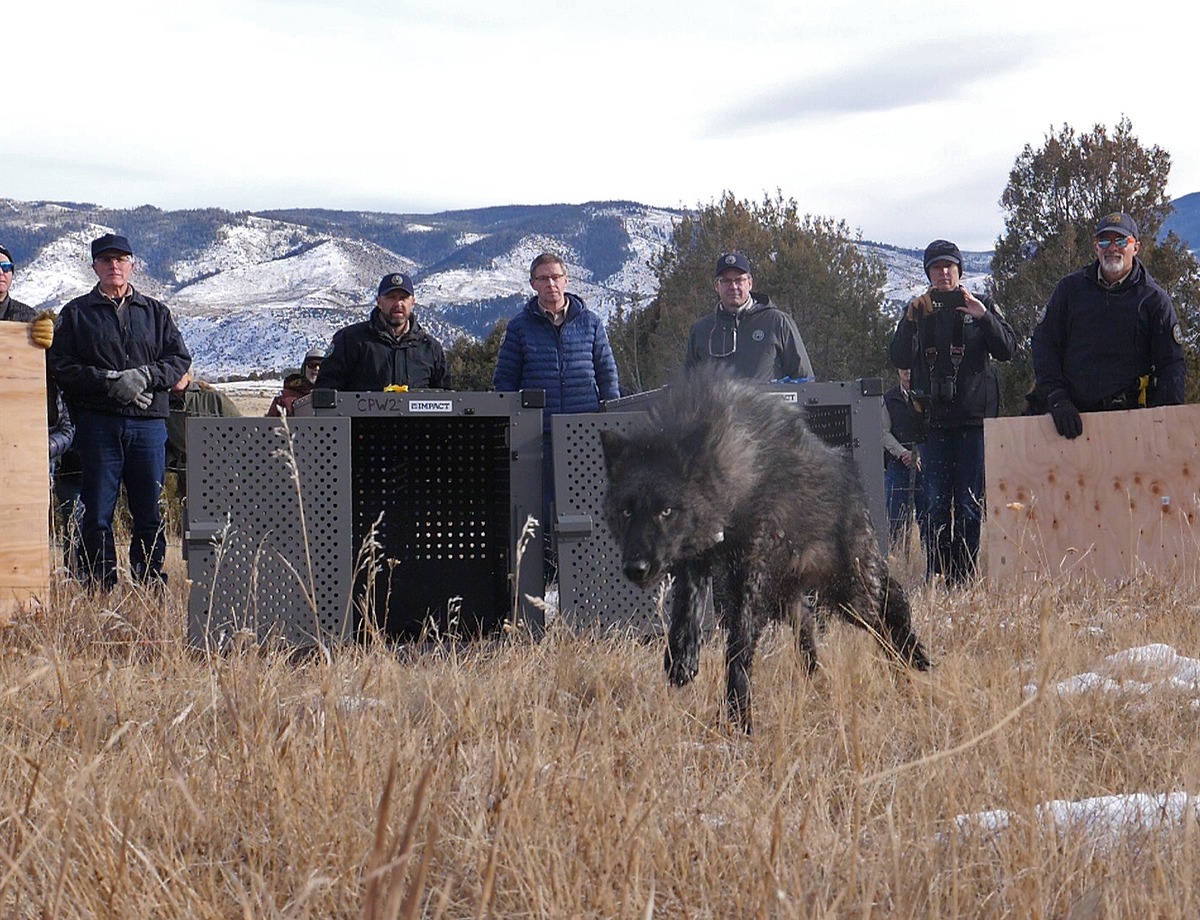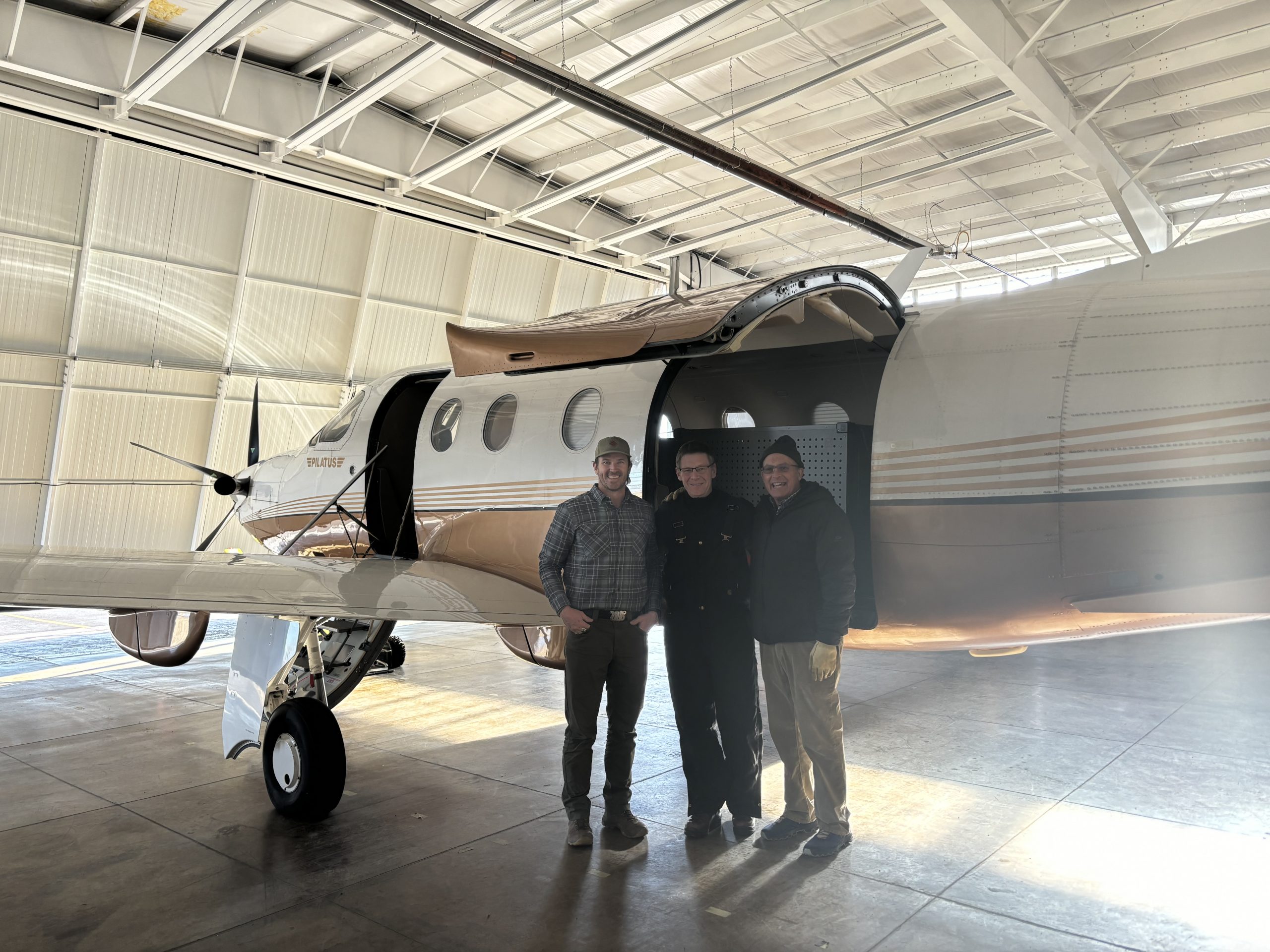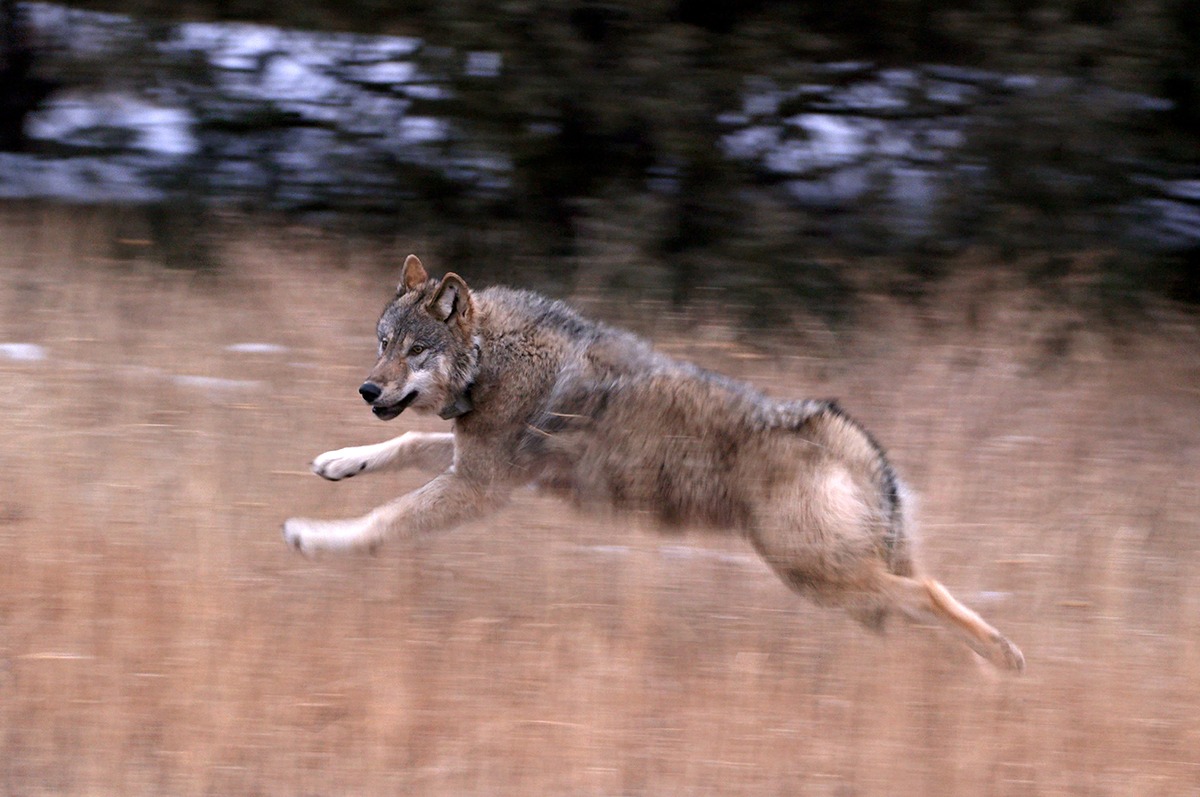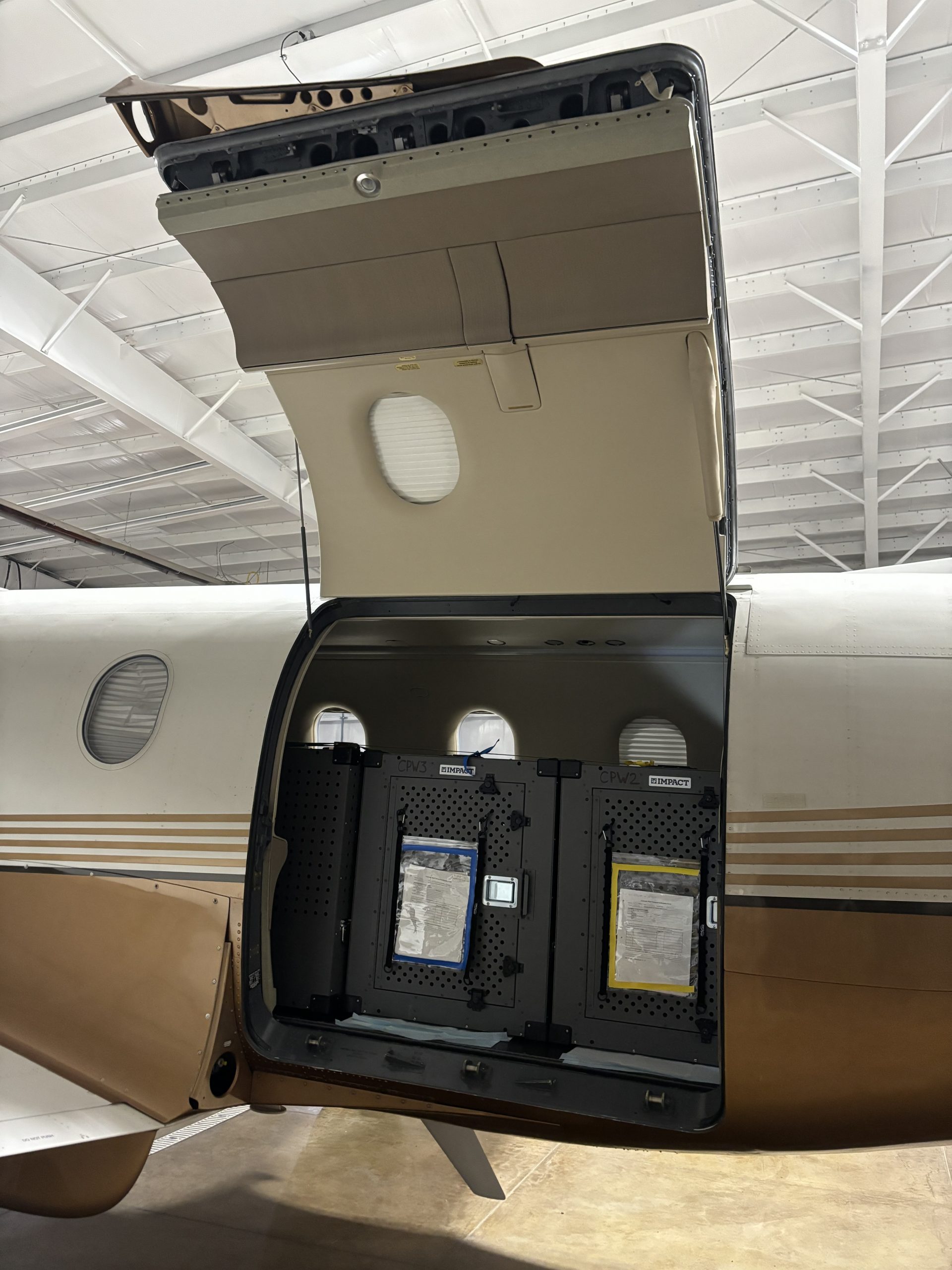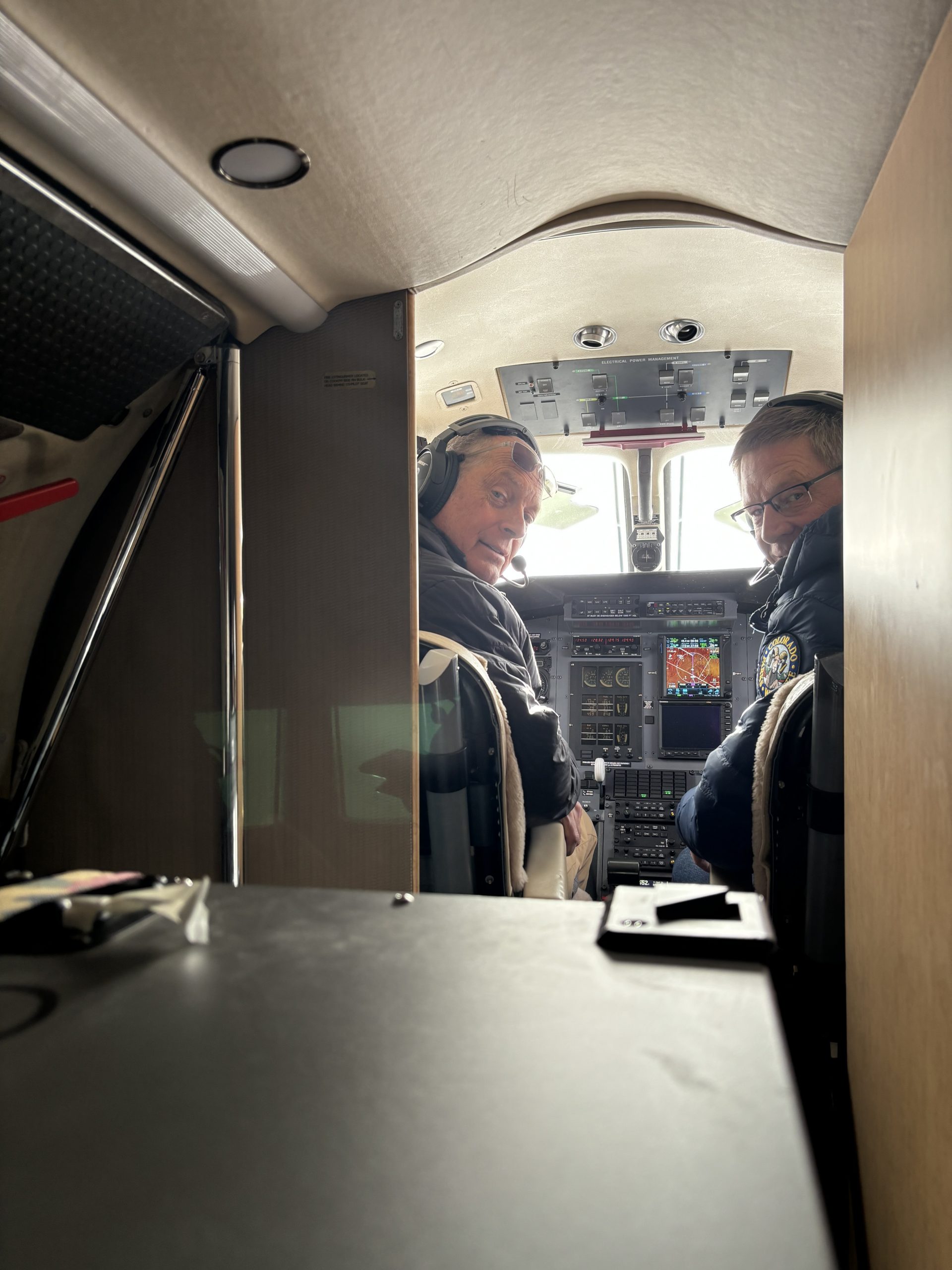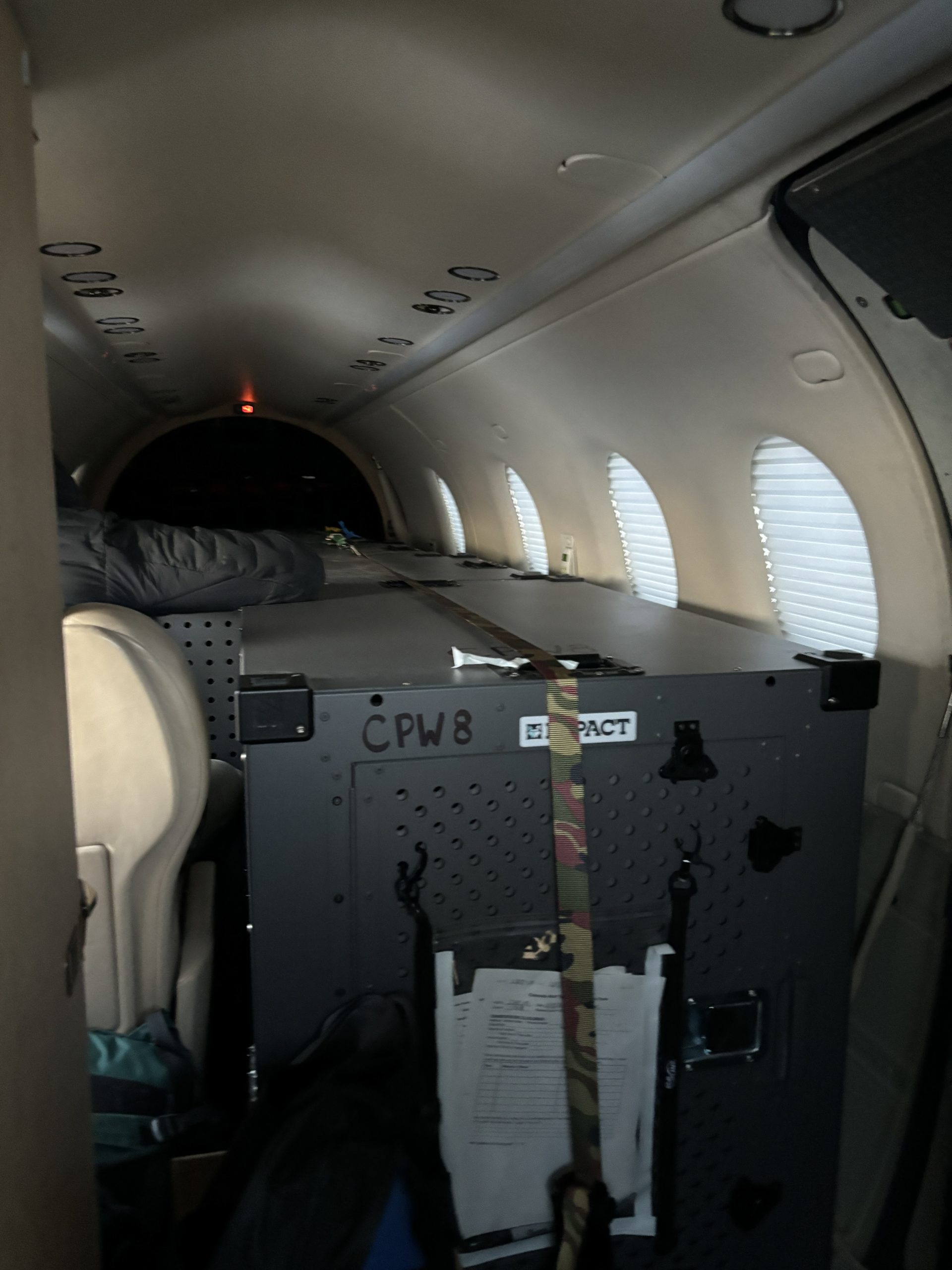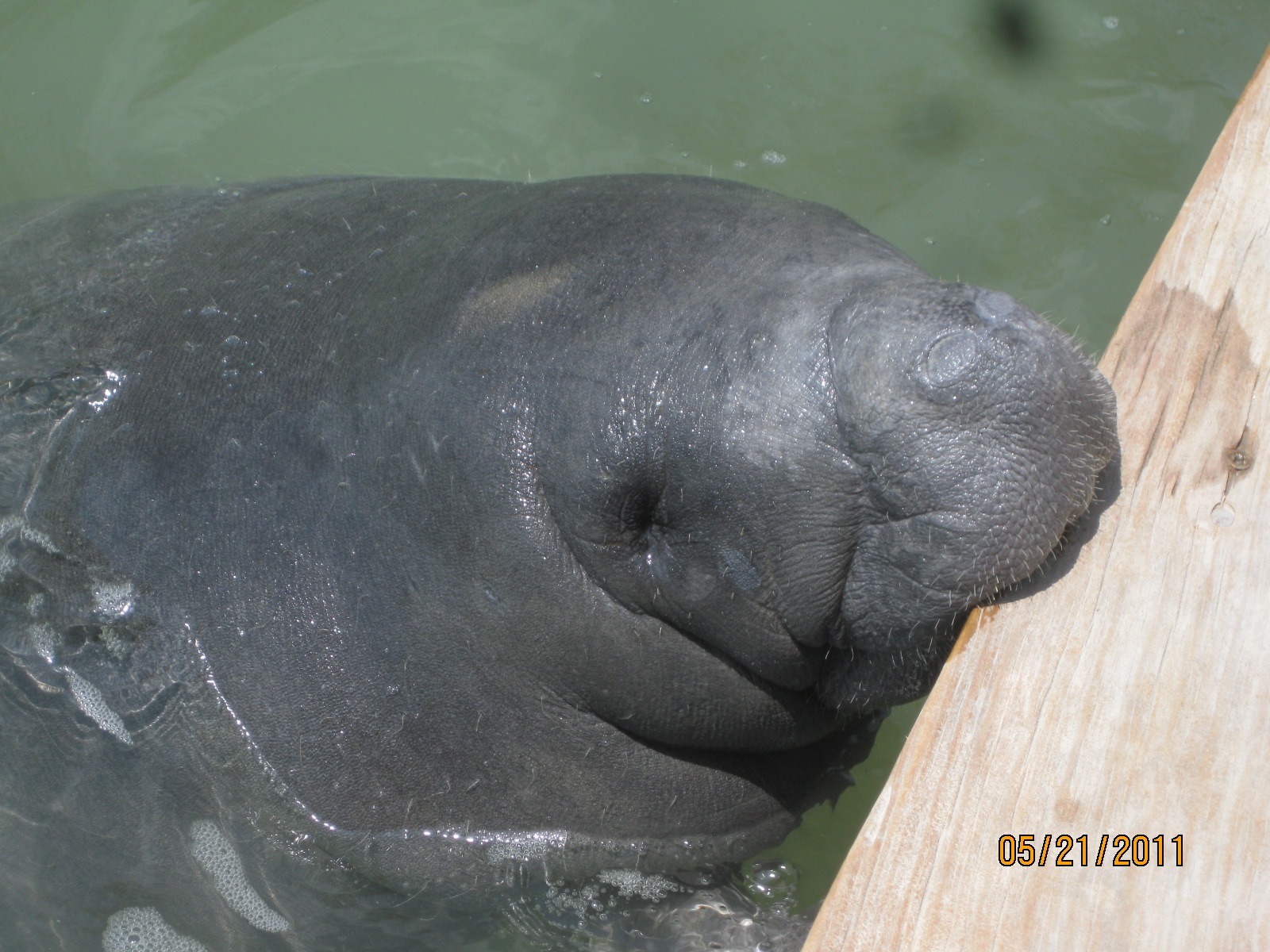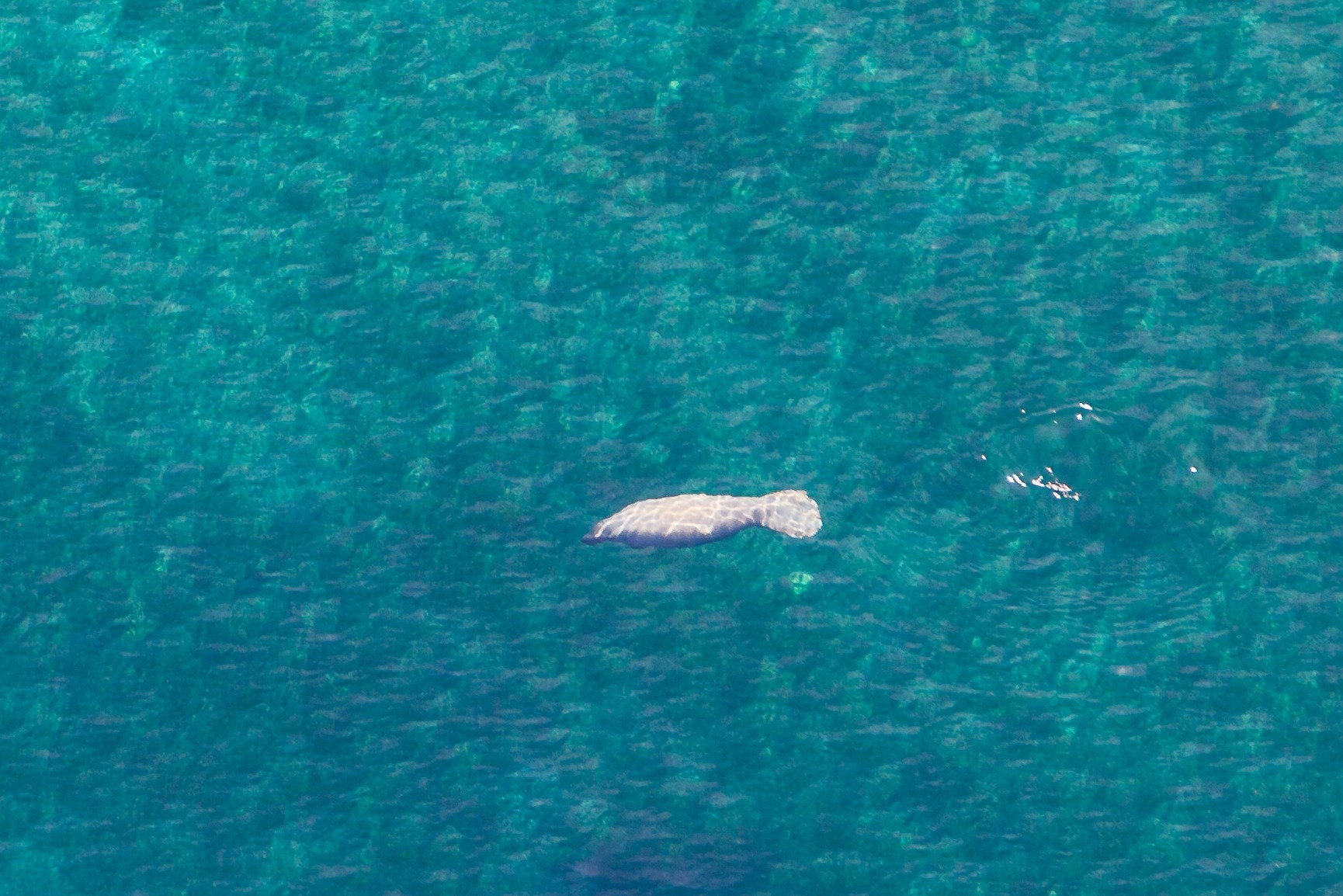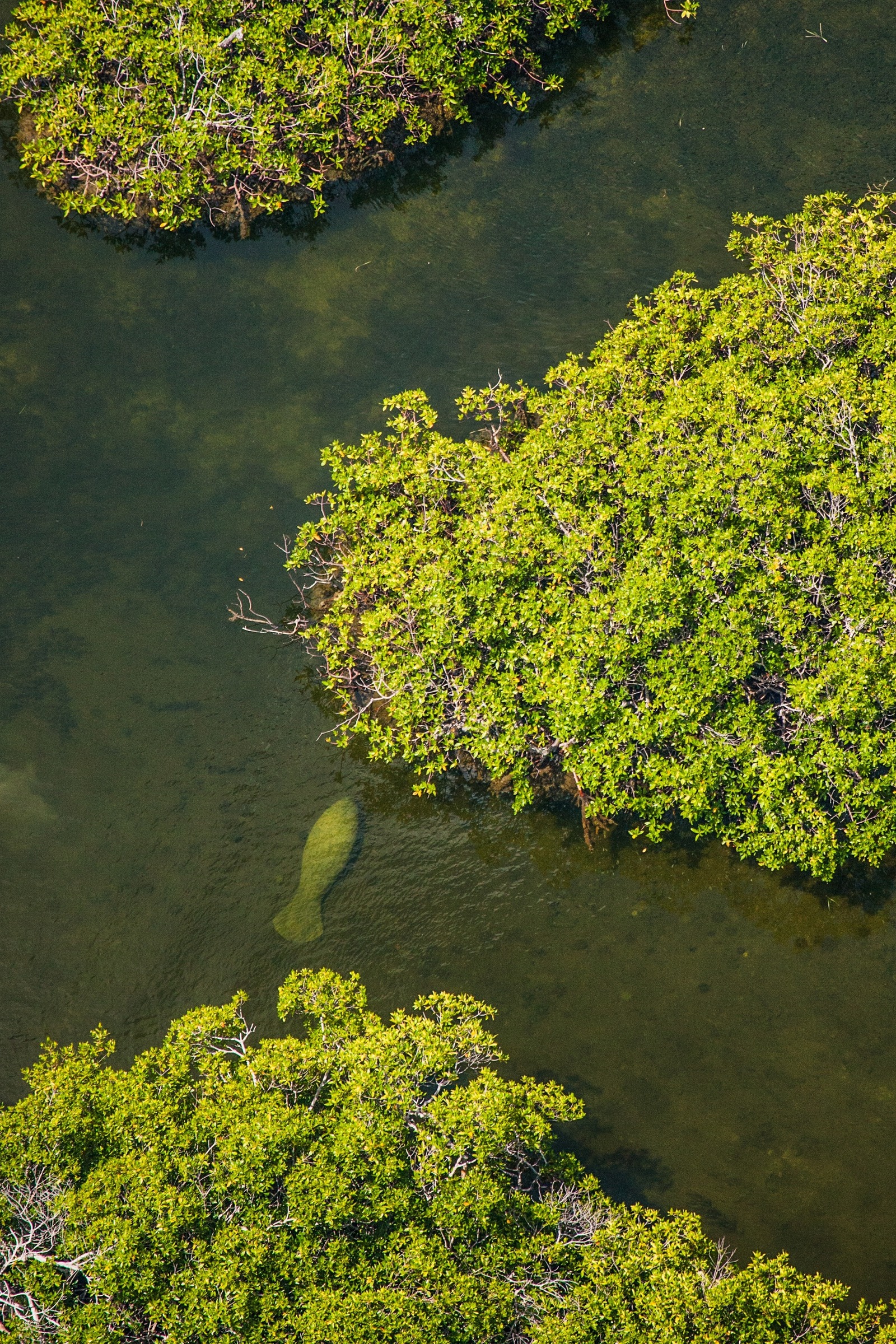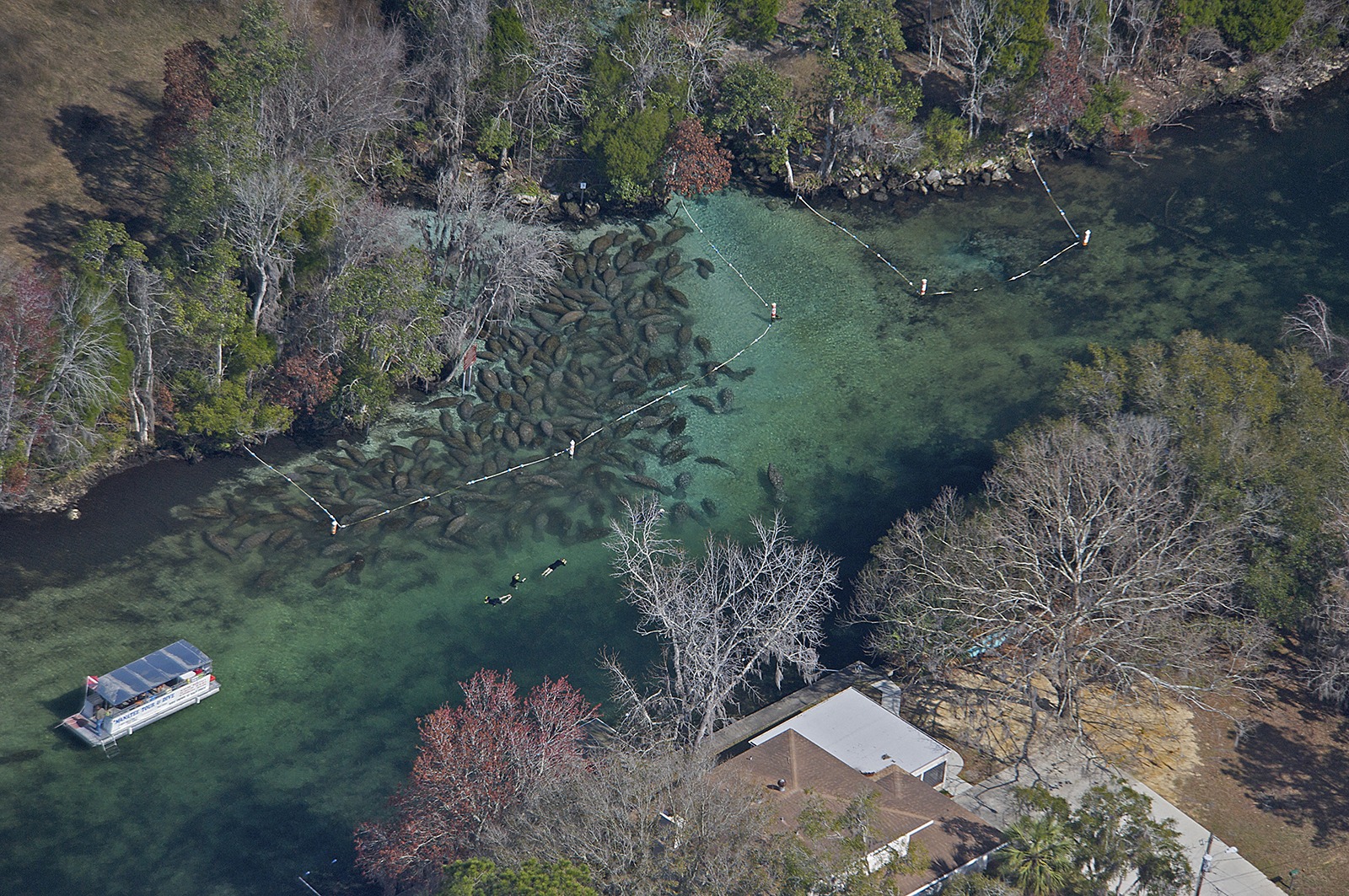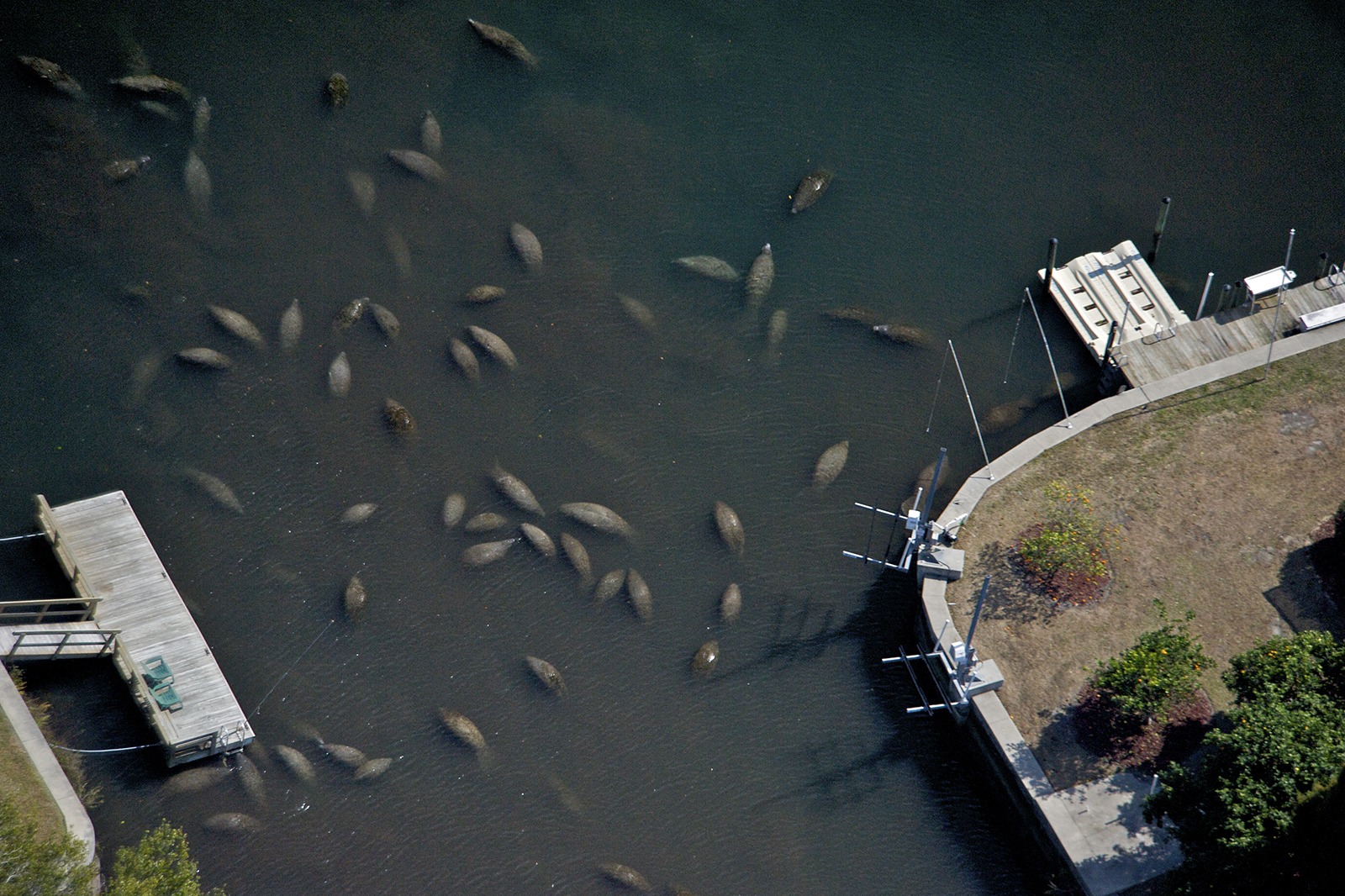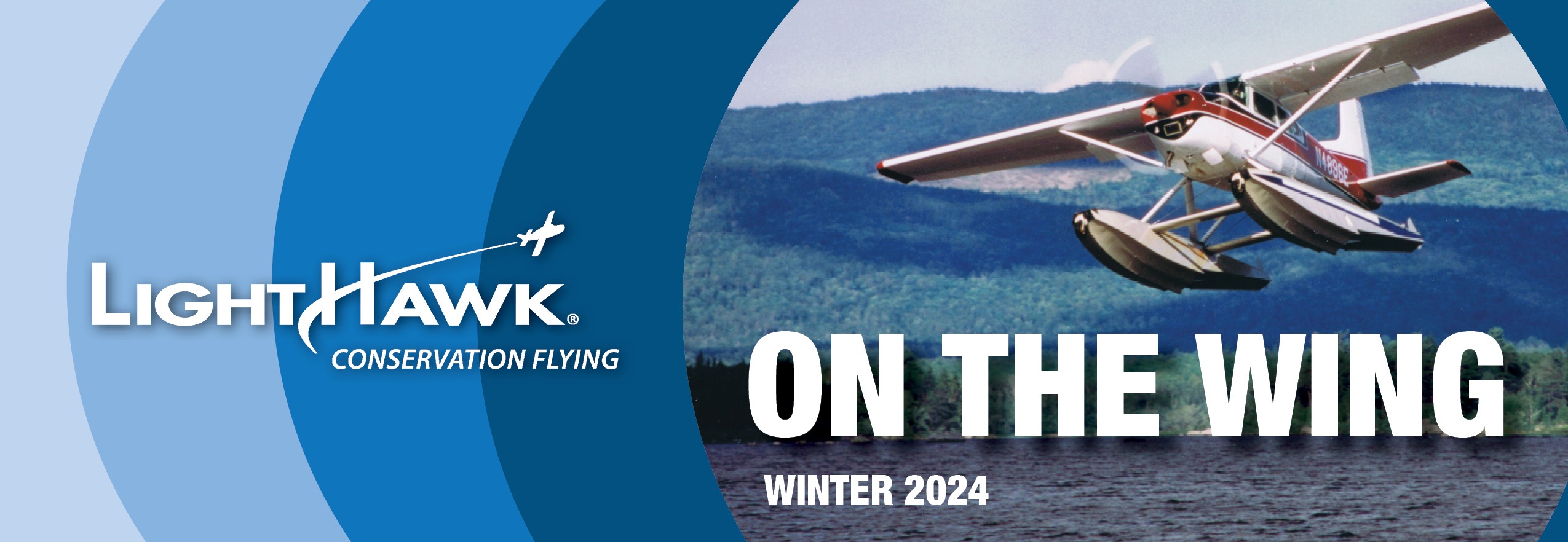
Solutions from the Sky

Expanding Wildlife Conservation
Welcome to the first edition of On the Wing, LightHawk’s quarterly newsletter, highlighting our growing conservation work. In this issue, we look at LightHawk’s wildlife program, where our unique aviation capabilities are playing a vital role in preventing endangered species, like California condors, Bobwhite quail, black-footed ferrets, whooping cranes, white abalone, and others, from slipping into extinction.
LightHawk’s airborne transport initiatives are vital for saving endangered wolf populations. We provide high-speed, quick response transport for young Mexican wolf pups from captive breeding facilities nationwide for cross fostering into wild dens. This has helped wild populations grow from near extinction to over 200 wolves in the Southwest.
Our efforts also extend to transporting adult Mexican and red wolves between breeding facilities to maintain genetic diversity among breeding pairs. And most recently, LightHawk’s Volunteer Pilots facilitated the essential transport for the mandated reintroduction of gray wolves into Colorado.
Expanding beyond transport, LightHawk’s general aviation aircraft play an essential role in wildlife monitoring. Our airborne capabilities gather crucial data on animal behavior, migration patterns, and population dynamics for various species, including birds, island foxes, harbor seals, pronghorn antelope, and manatees. Pilots may attach antennas to their aircraft for tracking animals with transmitters or transport scientists for observation and data recording.
In the current era of accelerating climate change and habitat loss, the potential for extinction is rising sharply, making LightHawk’s wildlife initiatives even more critical. With your generous support, LightHawk is expanding our impact on the conservation and recovery of our most endangered species.
Thank you for your continued confidence and support of LightHawk.
Jim Becker
LightHawk CEO
UPCOMING FLIGHTS
- WildEarth Guardians in Idaho
- Scripps News in Arizona
- Quail Transport from Florida to Pennsylvania
- American Rivers and the Sonoran Institute
- Trout Unlimited in Oregon and California
- Florida International University algal bloom study in Florida
- The Nature Conservancy in New Jersey
- Great Bay Watershed Educational Tour in New Hampshire
- Naushon Island Forest Health Assessment in Massachusetts
- Pine Barrens Stakeholder Education in Massachusetts
- ConservSWFL Corkscrew Swamp in Florida
- The Trustees of Reservations Forestry Assessment in Massachusetts
- Norcross Wildlife Foundation in Massachusetts
Gray wolves land in Colorado for release
In 2020, Proposition 114 was approved by Colorado voters. It directed the Colorado Parks and Wildlife Commission to “develop a plan to restore and manage gray wolves in Colorado, using the best scientific data available”.
The statute directed the Parks and Wildlife Commission to take the steps necessary to begin restoration of gray wolves in Colorado west of the Continental Divide no later than Dec. 31, 2023. It is anticipated that the efforts will require the transfer of about 30 to 50 wolves over a 3-5-year time frame.
Starting December 15, biologists began efforts in Oregon to locate and capture the first wolves for transport. The initial group included five wolves. Oregon and Colorado Parks & Wildlife veterinarians evaluated each of the wolves to determine if they were fit for relocation to Colorado. The evaluation looked at things like age, sex, health and body condition of each animal.
After their capture, CPW vets and biologists weighed and measured the wolves. They also collected genetic material – tissue and blood samples – before fitting each with a GPS satellite collar for tracking upon release.
Then, the wolves were given vaccines and placed in crates to be flown to Colorado for release back into the wild.
Once cleared for transport, the wolves were taken to the airport where LightHawk pilot Warren Dean waited with his Pilatus PC-12. The wolves were loaded onto the plane and joined by CPW staff for the trip.
After arriving in Colorado, the wolves were handed off to Colorado Parks & Wildlife officials and were transported to their release location in Grand County. Colorado Governor Jared Polis took part in the historic release alongside officials from CPW. As the crates were opened, the wolves sprang forward, dashing into their new habitat.
Over the following days, Oregon captured another five wolves, four of which were transported by LightHawk pilot Jack Long and delivered to Colorado and subsequently released.
Eric Odell (Colorado Parks & Wildlife) said, “We could not have accomplished this task as simply as we did without the cooperation and donated flights from LightHawk. What would have been 13-plus hour drives through the night was accomplished in 2.5-3 hour flights during daylight hours. Wolf and human safety was paramount for this project and the collaboration with LightHawk made this possible. We learned how simple and fast the transport could be accomplished, we learned about the sincere interest from the pilot in this project. Accomplishing the preliminary goal of getting wolves reintroduced by 12/31/23 was due in large part to the collaboration with LightHawk. We hope to be able to continue this partnership for the coming years.”
LightHawk Program Manager, Brooke George, worked with CPW for the last year to build a strong plan and partnership to support the wolf reintroduction efforts in the state.
LightHawk extends its appreciation and gratitude to volunteer pilots Warren Dean and Jack Long for donating the flights for this historic and important conservation project. Their contributions ensured the safe and efficient transport of 9 gray wolves from Oregon to Colorado by air, greatly minimizing stress on the animals.
Climate Corner
Manatee Conservation with LightHawk
In the heart of Florida’s waterways, LightHawk is taking flight to protect an iconic marine mammal, the manatee. Although declared endangered under the Endangered Species Act in 1973, these majestic animals still confront a host of dangers, with boat collisions claiming about 20% of manatee lives. But climate change also brings its own challenges to the declining species, with unpredictable water temperatures and extreme weather wreaking havoc on manatee populations. Add to that the loss of vital habitat and food sources due to urban development, and the situation becomes urgent.
That’s why LightHawk is stepping up its game. Our monitoring flights are not just about observation; they’re about action. By gathering essential data on manatee movements and the encroachment of urban development, we’re arming conservationists and decision-makers with the insights needed to protect these gentle giants. With our collaborative partnerships and steadfast commitment, LightHawk is flying to a brighter future in manatee conservation.
Romeo November lands spot in Wild & Scenic Film Festival
LightHawk’s “Romeo November: A LightHawk Story” film was selected for the Wild & Scenic Film Festival. The South Yuba River Citizens League’s Wild & Scenic Film Festival inspires environmental activism and a love for nature – through film.
The 5-day flagship festival is held annually in Nevada City and Grass Valley, California. Featuring 100+ films, workshops, visiting filmmaker and activist talks, family-friendly programs, art exhibitions, parties, and more.
Considered one of the nation’s premier environmental and adventure film festivals, this year’s films combine stellar filmmaking, beautiful cinematography, and first-rate storytelling to inform, inspire and ignite solutions and possibilities to restore the earth and human communities while creating a positive future for the next generation.
Romeo November: A LightHawk Story was produced in collaboration with American Rivers and Trout Unlimited. Click HERE if you would like to attend the film festival virtually.
Partner Spotlight: Ventanna Wildlife Society
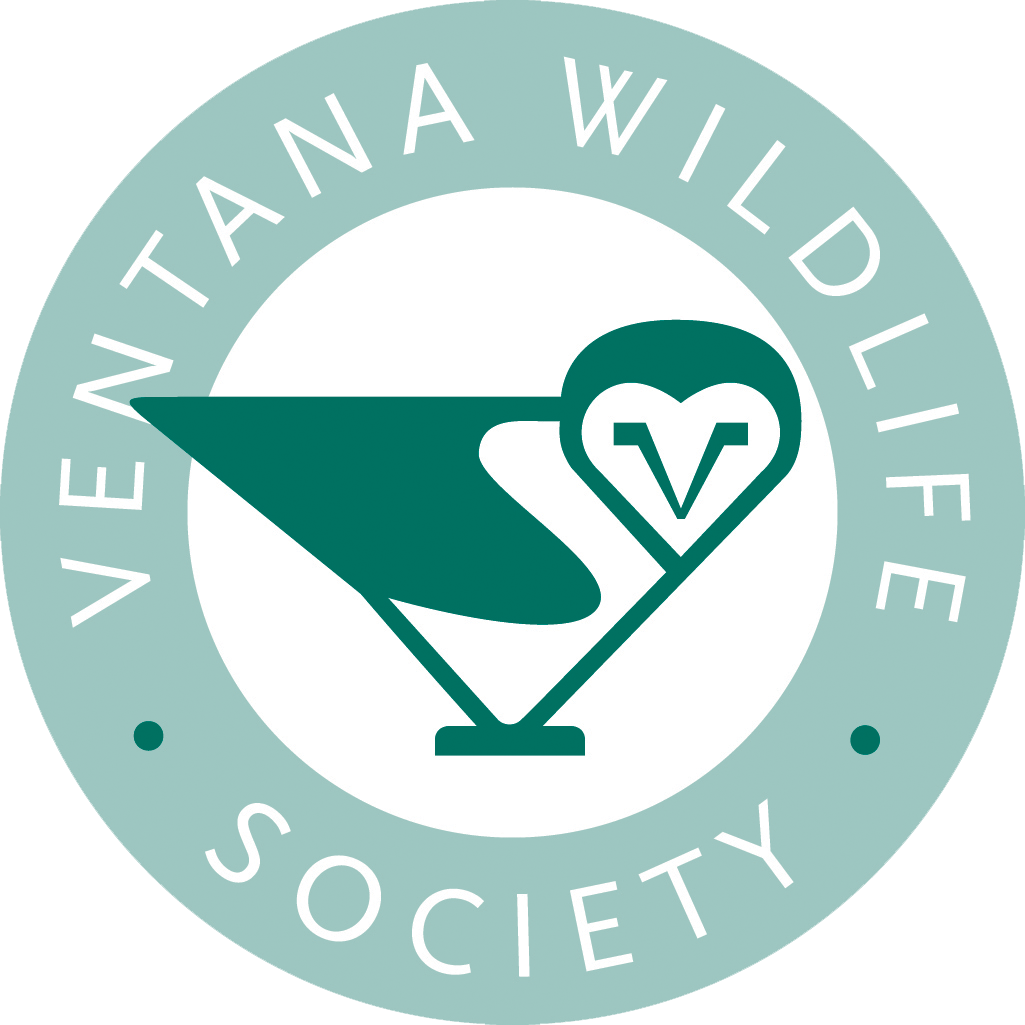
The Ventana Wildlife Society has become a strong partner with both Pinnacles National Park and LightHawk. These partnerships have made a significant difference towards restoring the population of California condors in central California.
VWS co-manages the condor population in Pinnacles National Park. Together, they have called on LightHawk to help transport condors and conduct aerial telemetry flights to locate condors within the park.
The importance of this work has increased in the past year due to a high number of condor deaths from avian flu or lead poisoning, a leading cause of fatality among the birds.
LightHawk is proud to be part of this vital conservation work with Ventanna Wildlife Society and we look forward to future collaboration to preserve these majestic creatures.
Flight Towards Sustainability: A Visionary Commitment
Addressing our planet’s biggest issues demands a broader, forward-looking perspective and a strong commitment. As a Conservation Visionary, your monthly gift empowers LightHawk to take flight and confront nature’s most pressing challenges head on. From biodiversity loss to climate change, your steadfast support propels us into action to protect our natural world – today and tomorrow.
Join us as a Conservation Visionary in the flight towards a sustainable future and ensure a lasting impact on both people and nature!

